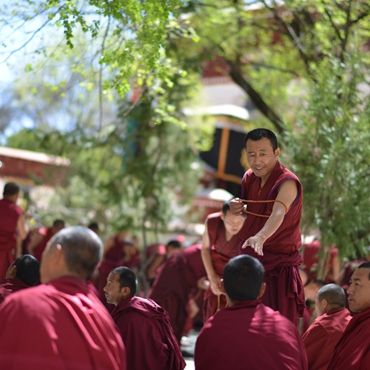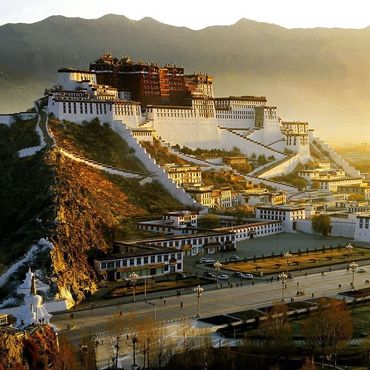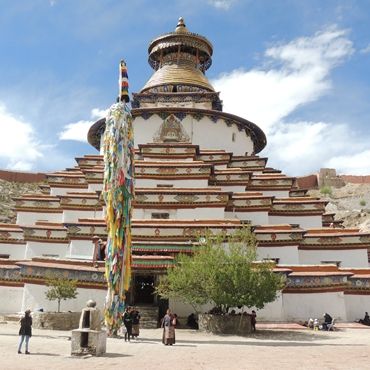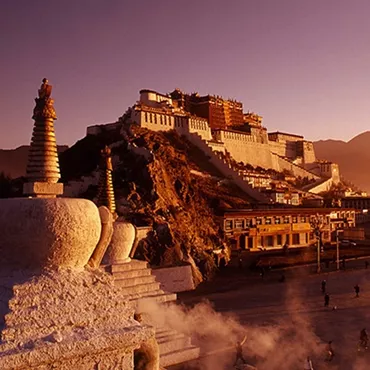Tibet Travel Tips
Climate and Weather
Located in the world’s highest plateau, Tibet is characterized as the thin air, low air pressure, strong solar radiation, large temperature difference and distinct dividing line between rainy and dry season.
The best tourism time in Tibet is from April to November, especially August when the weather is coziest and the oxygen is sufficient.
Notes:
1. In July and August, it rains much, but at most cases it rains at night.
2. The higher it is the lower the temperature is, hence take proper clothes with you.
3. In Tibet, what you need to prepare are clothes for various temperatures, sun-scream and sunglasses.
4. In case of suffering from the altitude sickness, make a well preparation, like doing exercise or paying due attention to your health.
5. Lack of oxygen is the main reason for altitude sickness. In many places in Tibet, you can buy oxygen in bottles, each charging 20 CNY. One or two bottles will be enough.
Local Festivals and Folk Customs
The firmed notion in the Tibetan minds is that where there is faith there is hope. Tibetans have command of simple but devote nature.
Once, a man, whose wife was seriously ill, went to Potala Palace to pilgrimage. All the way, with the view to express his faithfulness, he kowtowed every three steps. As a result, when he got to the Potala Palace, his forehead was bleeding.
Local Festivals
Tibetan New Year
It is the most solemn festival for Tibetan celebrated on the first day of the first Tibetan lunar month or in February. Like celebrating the Spring Festival, people dress up and greet each other for a happy New Year with Chema and barley wine, and some will dance to welcome the New Year, some even paste the antithetical couplets up.
On that day, man, young or old, will have their hairs cut; women, young or old, will wash their hair. People also will clean their houses up--every corner.
Butter Lantern Festival
It is festival similar to Lantern Festival, on when the Tibetans go to pilgrimage in daytime and hold the lantern ceremony at night. From the year of 1049 on, on the fifteenth day of the Tibetan lunar Tibetans have been celebrating the Butter Lantern Festival by hanging the butter-made statues, such as features, flowers and plants, birds and other animals, on the flower racks and dance under the racks all the night.
Shoton Festival (Yoghourt Feast)
Shoton Festival lasts a week from the first day of July. During the festival, people, especially those dwell in Lahsa, will dress up and bring the yammy foods and beverages such as dim sum, sweets, local dishes, barley wine, butter tea and beer, as well as tents to the Norbulingka--the most spectacular park in Tibet--to enjoy the show. Troup from different places will perform the various local entertainments like the Tibetan drama, for seven days. It is the most alive festival in that on this day, all the people, young or old, will go out to join in the celebrating activities. No one stays home.
Folk Customs
Presenting Khatag
Khatag is the most common gift the Tibetan present to pay respects and congratulations. It is a traditional etiquette that Tibetan present the Khatag when attend the wedding, burial or celebration ceremony, pay call to the elders and betters, go pilgrimage and set friends off.
Khatag is made of silk, most of is white, some are yellow or blue or with five colors--white, blue, yellow, green and red. The Khatag with five colors is often presented to Bodhisattva or the closest relative as the most cherished gift.
Kowtow
Kowtow isn’t an unusual etiquette in Tibet. People will kowtow when worshiping or seeing the living Buddha. Kowtow is a way to show your devoutness, gratitude and respects. In the feudal period, the officials had to kowtow in emperor and said:"Long live majesty."
Taboos
1.No smoking in monasteries and temples.
2.You should accept the gift with both hands.
3.Remember not step on threshold when entering the tent or house.
4.It is not polite to clap your palms and spit behind the Tibetan people.
5.When present gifts, you should bend forward and hold the gift over your head with both hands.
6.Eagles are the sacred birds in the eyes of the Tibetan. You should not drive them away or injure them.
7.When asked to take a seat, please cross your legs, don't stretch your legs forward and face your sole to others.
8.Tibetans stretch out their tongue to say hello to you and sometimes put their hands palm to palm in front of breast.
9.Tibetan people don't eat the meat of horse, dog and donkey or fish in some areas so please respect their diet habits.
10.It is banned to touch the statue of Buddha and religious articles and take pictures of them. In addition, all should walk clockwise (not in the Bon temples).
Other Odds and Ends
Phone Dialing Code:0891
Postcode:850000
Emergency Call
Fire: 119
Police: 110
Traffic alarm: 122
Weather Forecast: 121
Emergency center: 120
Tibet Hospital:0891-6332462
Tourist complaint: 0891-6833476
Airport information desk: 0891-6833446, 0891-6182220
Passenger information desk of long-distance bus terminal: 0891-6824469
Universities
Tibet University
Location: No. 36, Jiangsu Rd., Lahs, Tibet
College of Tibetan Medicine
Location: No. 10, Middle Dangre Rd., Lahsa, Tibet
Tibet University for Nationalities
Location: No. 6, East Wenhui Rd., Xianyang, Shanxi Province
















